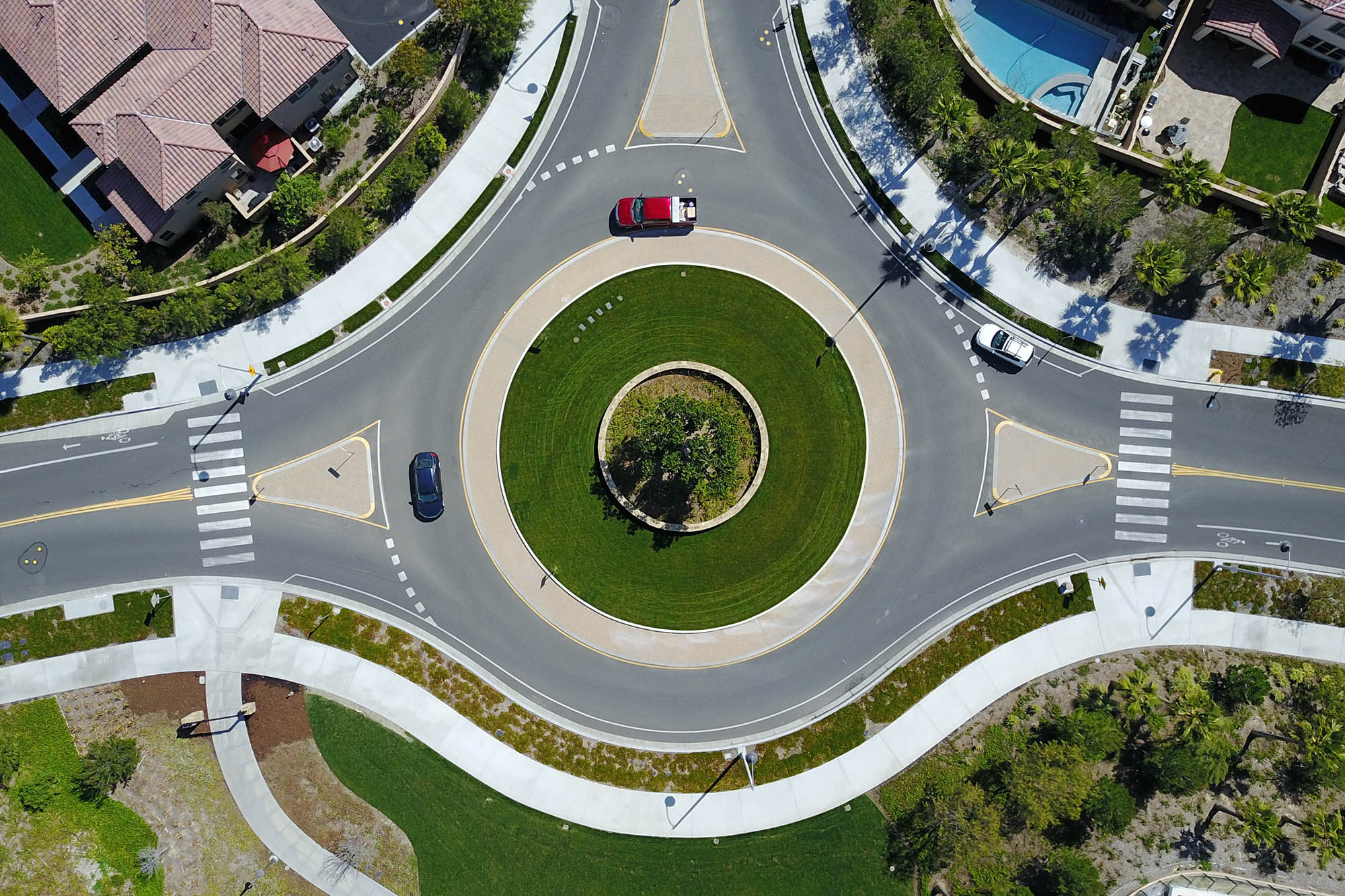What You Need to Know About Roundabout Etiquette
Confusing at first, these intersections are generally safer and smoother than traffic lights.
 Getty Images
Getty Images
Roundabouts are among the safest types of intersections on modern roads, according to the Insurance Institute for Highway Safety. By reducing the risk of T-bone collisions that are inherent in traditional 90-degree designs and eliminating the temptation to speed up to catch a yellow light, roundabouts can calm traffic while also maintaining its flow.
Still, approaching a roundabout may fill some drivers with dread and uncertainty, especially if they live in a part of the country where such intersections are rare. Knowing the proper etiquette for navigating these efficient traffic-sorting circles can ease that anxiety and help to keep both you and other motorists safe.
Stay Alert to Traffic
Most roundabouts are designed so that you have an unobstructed view across the middle, regardless of which entry point you're using. This is done to give you a clear picture of the traffic that's either already in the roundabout or about to enter. It also allows you to spot any pedestrians who might be crossing or waiting to cross.
Keep your eyes up and make sure you have the lay of the land before you drive into a roundabout. It's your responsibility to yield to pedestrians and drivers who are already moving through the traffic circle.
Choose the Correct Lane
Some roundabouts use multiple lanes to help keep traffic moving smoothly. Typically, there are signs posted or painted on the ground that explain which lane you should use — some lanes are for traveling straight through the roundabout, some are for exiting on the right, and some are for continuing counter-clockwise to make a left turn.
Choosing the correct lane can prevent you from becoming an obstacle to other drivers and potentially causing a fender bender. Know which exit you're aiming for, make sure you're in the proper lane to get to that exit, and avoid cutting anyone off when making your move across lanes to the exit itself.
Use Your Turn Signals
Communication is essential when driving in traffic, and roundabouts are no exception. Making your exit intentions clear is necessary so that drivers both inside and about to enter the roundabout understand what your plans are. This means using your turn signal to indicate you're changing lanes or taking an exit.
Take It Slow
Roundabouts are specifically designed to slow down traffic without actually stopping it. This is done in part through the use of sharp curves that require caution to navigate. There's little to be gained by maintaining an unsafe speed through a roundabout, especially given the need to account for and yield to other traffic.
Don't Panic Over a Missed Exit
If you miss your exit in a roundabout, just keep calm and carry on. Unlike a highway, where linear travel makes a missed exit a hassle, in a roundabout, you can simply keep driving around the circle to get a second opportunity to make the correct turn. This means there's no need to switch lanes abruptly or jockey for a risky last-minute maneuver.
Written by humans.
Edited by humans.
 Benjamin Hunting
Benjamin HuntingBenjamin Hunting is a writer and podcast host who contributes to a number of newspapers, automotive magazines, and online publications. More than a decade into his career, he enjoys keeping the shiny side up during track days and always has one too many classic vehicle projects partially disassembled in his garage at any given time. Remember, if it's not leaking, it's probably empty.
Related articles
View more related articles